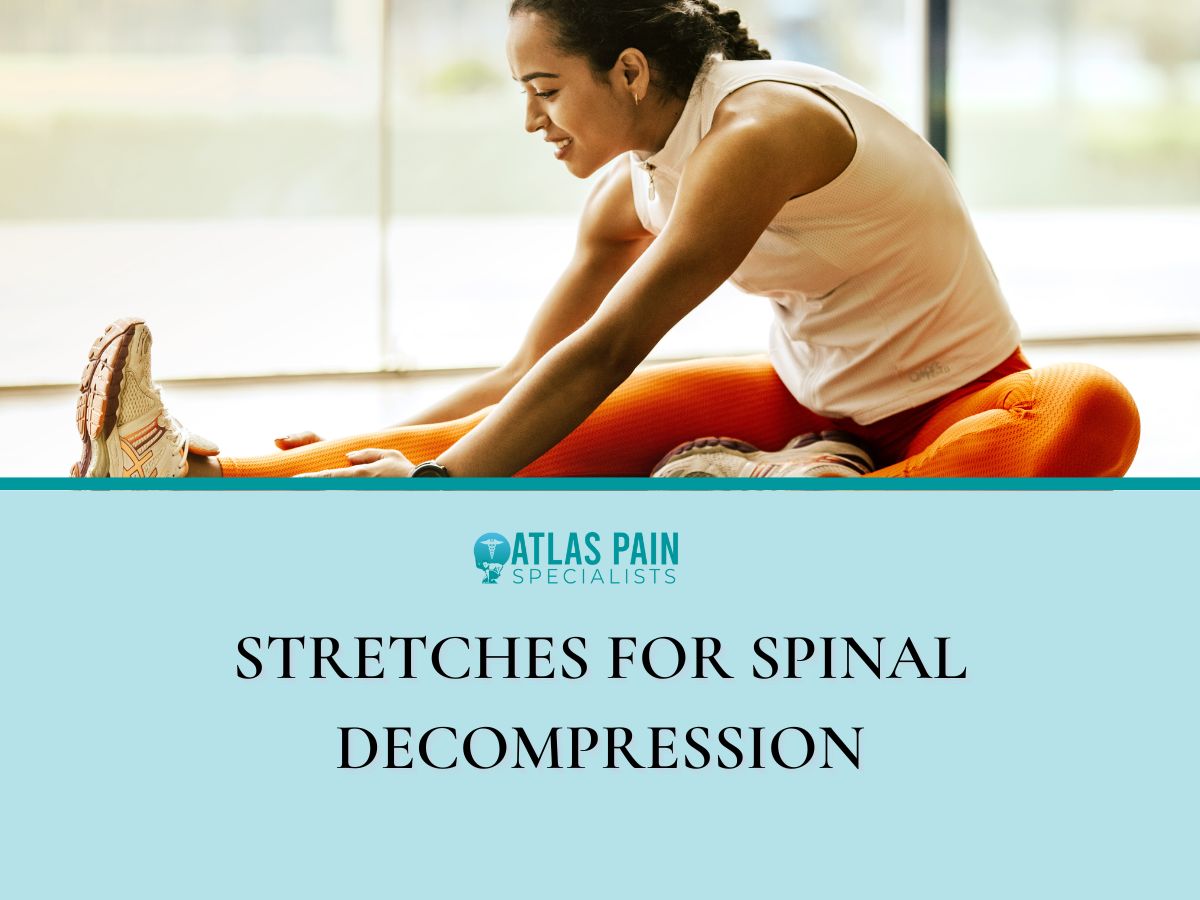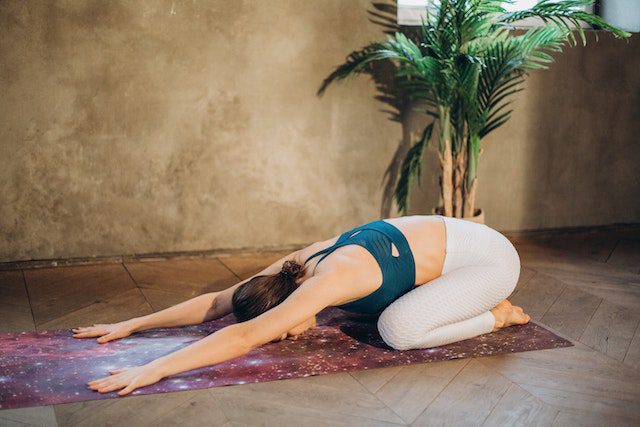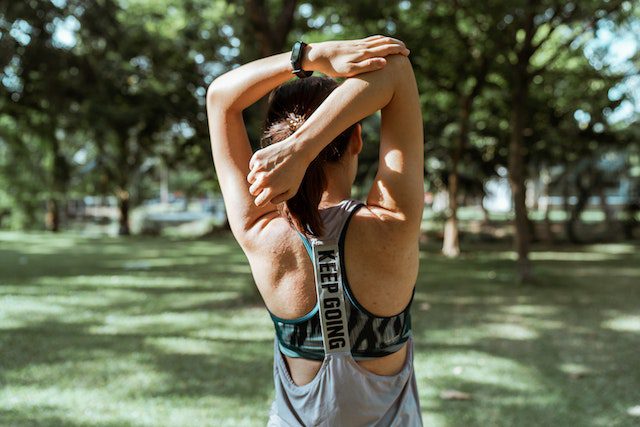

Stretches For Spinal Decompression
Spinal decompression is the process of taking pressure off the spine. This can be done in a number of ways, such as through stretches, exercises, and other forms of therapy.
Spinal decompression is important because it can help relieve pain and discomfort caused by herniated discs, sciatica, and degenerative disc disease.
Stretching is an important part of spinal decompression as it can help to improve the flexibility of the spine and reduce the risk of injury. In this article, we'll talk about specific stretches that can help decompress the spine.
Stretches for spinal decompression
1. Cat-Cow Stretch
Try the cat-cow stretch if you're looking for a straightforward and effective method to relieve spinal compression.
- To perform the stretch, get down on your hands and knees, positioning your wrists directly under your shoulders and your knees directly under your hips.
- Make a soft "C" with your spine by elevating your head and tailbone toward the ceiling as you inhale, and a "U" by rounding your back and tucking your chin towards your chest as you exhale.
- Repeat the alternating postures many times.
The cat-cow stretch helps to gently stretch and move the spine, which is good for spinal decompression. This stretch can help make the spine more flexible and increase its range of motion, which can relieve pressure on the discs and nerve roots.
Also, the movement of the stretch can help improve blood flow to the spine, which can help it heal and reduce swelling.
2. Child's Pose

The child's pose is another good way to stretch and loosen up the spine.
- To do the stretch, start on your hands and knees with your wrists under your shoulders and your knees under your hips.
- As you let your breath out, sit back on your heels and stretch your arms forward, putting your forehead on the ground.
- Hold the stretch for a few deep breaths while you feel the stretch in your back and spine.
The child's pose is good for decompressing the spine because it helps to stretch and relax the back muscles. This stretch can help reduce muscle tension and spasms, which can help relieve pressure on the spine.
Also, the child's pose can help improve posture and alignment, which can help reduce stress on the spine.
3. Cobra Pose

The cobra pose is a yoga move that helps to take pressure off the spine.
- Start the stretch by lying on the ground on your back with your palms flat next to your chest.
- As you take a breath in, press into your palms and lift your chest off the ground.
- Keep your elbows close to your sides, and use the muscles in your core.
- Hold the position for a few deep breaths, and then let go. This will make your spine longer.
The cobra pose helps decompress the spine because it strengthens and stretches the muscles in the spine. This stretch can help make the spine more flexible and strong, which can help take pressure off the discs and nerve roots.
The cobra pose can also help improve your posture and alignment, which can help reduce stress on your back.
4. Seated Spinal Twist
The seated spinal twist is a good way to stretch and loosen up the spine.
- Start the stretch by sitting on the floor with your legs crossed in front of you.
- As you breathe in, straighten your back, and as you breathe out, twist to one side, putting one hand behind you and the other on the outside of the opposite knee.
The seated spinal twist is good for spinal decompression because it helps to stretch and relax the muscles of the spine.
- Keep your back straight and twist as far as you can without getting too tight.
- Hold the twist for a few deep breaths, then let go and do it on the other side.
This stretch can help make the spine more flexible and increase its range of motion, which can help relieve pressure on the discs and nerve roots. The seated spinal twist can also help improve your posture and alignment, reducing stress on your back.
Benefits of Stretching

Increased Flexibility
Stretching can help to improve flexibility, which can be beneficial for spinal decompression. Increased flexibility can help to reduce tension in the spine and improve posture.
Stretching can also help to strengthen the core muscles, which can help to support the spine and reduce the pressure on spinal discs. Finally, regular stretching can also increase blood flow, which can help to nourish the discs and promote healing.
Improved Posture
Stretching can help to improve posture, which is important for spinal decompression. Good posture can help to reduce pressure on the spine and can help to reduce pain and discomfort.
Stretching can help to improve posture by increasing flexibility, which can help to make it easier to stay in good posture for longer. It can also help to strengthen the postural muscles, which can help to hold the body in a better posture.
Furthermore, stretching can help to reduce tension in the neck and shoulder muscles, which can help to reduce pain and discomfort in the upper body.
Reduced Risk of Injury
Stretching can help to reduce the risk of injury. Increased flexibility can help to reduce tension in the spine and can help to reduce the risk of strains and sprains.
Stretching can also improve posture, improve circulation, and reduce stress. It can also help to improve the range of motion and flexibility.
Important Considerations

Warm Up Prior to Stretching
It is important to warm up prior to stretching. Warming up can help to increase circulation and can help to reduce the risk of injury. A good warm-up could include a light jog or a brisk walk, followed by dynamic stretching.
Dynamic stretching involves controlled movements to increase the range of motion and flexibility, as opposed to static stretching which involves holding a stretch for a period of time. Dynamic stretching is especially beneficial prior to exercise or activity.
Avoid Overstretching
It is important to avoid overstretching. Overstretching can lead to strains and other injuries. It is important to stretch gently and slowly. Stretching should be done before and after any physical activity.
It is important to stretch the muscles that will be used during the activity, as well as the muscles that support the activity. It is important to listen to your body and not overstretch. If an area is too sore or tight, it is best to avoid stretching it.
Stretch Gently and Slowly
It is important to stretch gently and slowly. It is important to listen to your body and avoid pushing too far.
Stretching should be done in a slow and controlled manner. Take your time to slowly and gently increase the range of motion in each stretch.
It is important to stop when you feel any discomfort or pain and to avoid pushing beyond your body's limits. Stretching should be used to improve flexibility and mobility, not to cause pain or injury.
Conclusion
Spinal decompression is important in keeping your spine healthy and reducing pain. The cat-cow stretch, child's pose, cobra pose, and seated spinal twist discussed in this essay are all good ways to decompress the spine.
When doing these stretches, it's important to remember to listen to your body and not go too far. Before starting a new exercise or stretching routine, you should also talk to a doctor or nurse.
By doing these stretches daily, you can improve the health and function of your spine and, in the long run, your overall health.
About Dr. Sean Ormond



